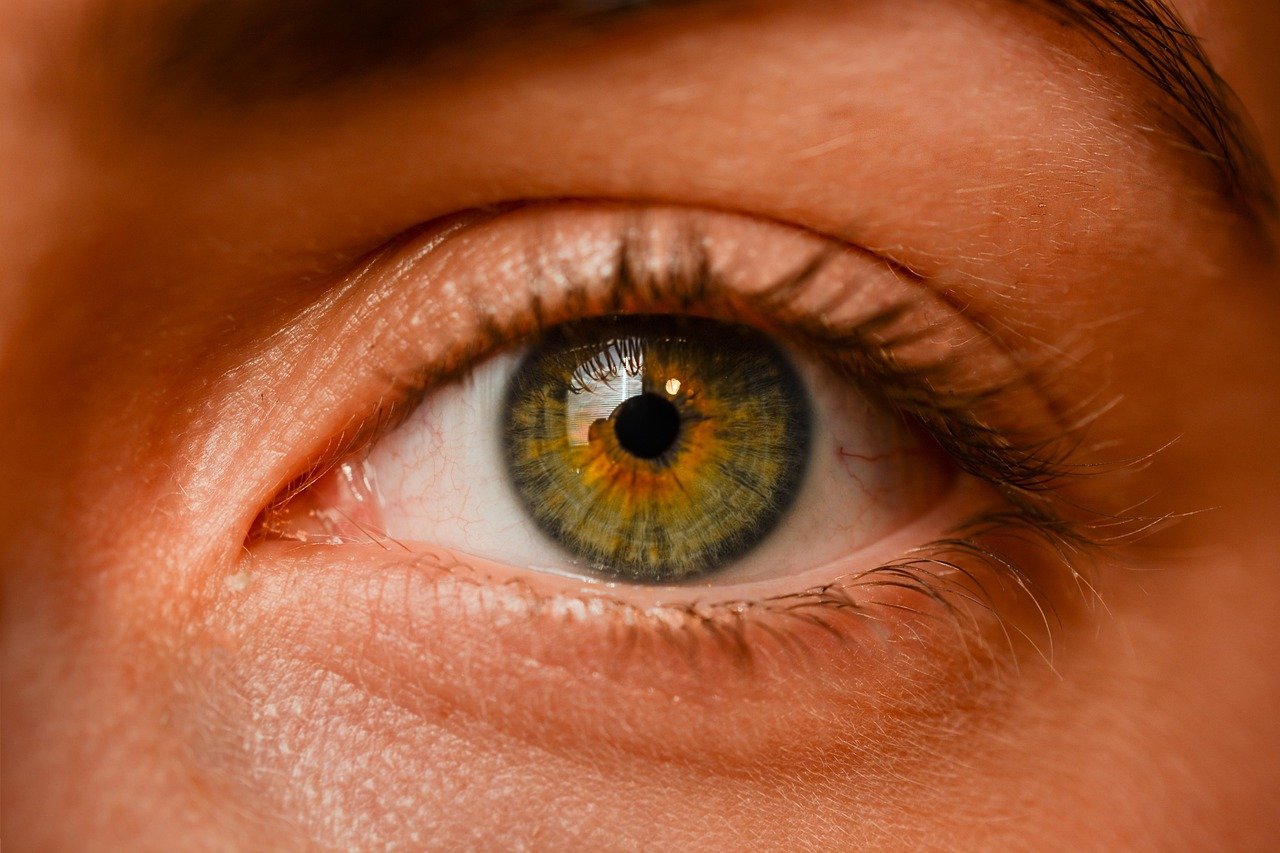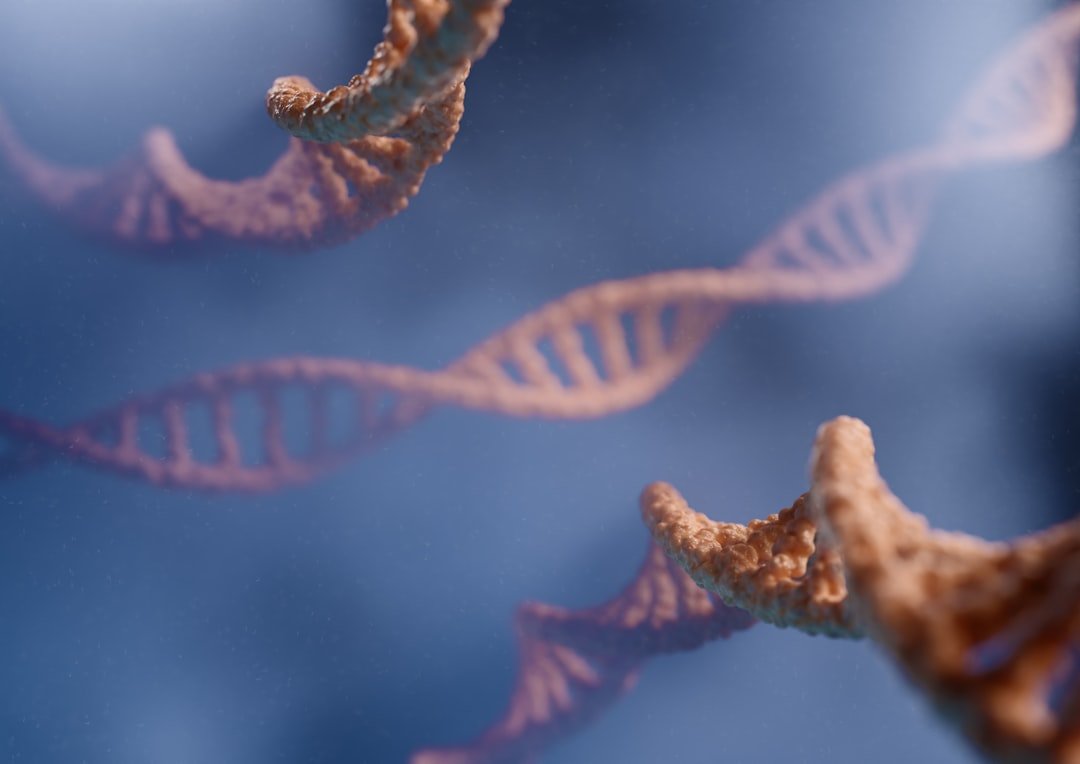What if I told you that some people walking among us right now possess abilities that seem almost superhuman? Not from comic books or science fiction movies, but real genetic mutations that give ordinary humans extraordinary capabilities. While most genetic variations are neutral or even harmful, nature occasionally rolls the dice and creates something remarkable. These rare mutations don’t just make people different – they transform them into living examples of human potential we never knew existed.
From bones that are virtually unbreakable to vision that sees millions more colors than the rest of us, these genetic gifts challenge everything we thought we knew about human limitations. Let’s dive into nine incredible mutations that prove truth really can be stranger than fiction.
Super Strength Without the Gym Membership

Imagine building muscle mass that’s double the average person without ever setting foot in a gym. In humans, this mutation allows one to reach a muscle mass double that of the average person and stay muscular, without having to do much to keep it up. This isn’t the stuff of superhero comics – it’s a real condition caused by mutations in the MSTN gene that reduce production of myostatin.
The proteins myostatin and activin A are two proteins normally secreted by muscle cells to suppress excessive growth. They basically regulate the size and number of your muscle cells, thereby putting a limit on your overall strength. When these genetic brakes fail, muscles can grow to extraordinary proportions. Some people carry a mutation in the MSTN gene, which reduces the production of myostatin, a protein that limits muscle growth.
People with this mutation don’t just look impressive – they possess genuine superhuman strength. The condition is so rare that only a handful of documented cases exist worldwide. While it might seem like winning the genetic lottery, the mutation can come with complications, including potential heart problems from the increased muscle mass affecting cardiac tissue.
Bones That Refuse to Break

But there’s a superpower in real life that’s sort of like that, unbreakable bones… They have bones that are super strong and extremely resistant to breaking. This remarkable condition stems from mutations in the LRP5 gene, which normally regulates bone density. Yale researchers discovered the mutation among one particular Connecticut family.
While most people worry about fractures from falls or accidents, individuals with this mutation live almost worry-free when it comes to broken bones. But a different type of mutation on the same gene could also have the opposite effect, giving some people extremely dense bones that are practically unbreakable. The bones become so dense they’re nearly indestructible under normal circumstances.
However, this superpower comes with an odd side effect. There is a slight side effect to the “unbreakable bone” condition though. Some people with the LRP5 mutation will also exhibit bony protruding growths on the roof of their mouth. Scientists believe understanding this mutation could revolutionize treatments for osteoporosis and other bone diseases.
Supernatural Flexibility Through Marfan Syndrome

What makes horror movie actors so unnaturally flexible that they can contort their bodies into impossible positions? The answer lies in Marfan syndrome. Marfan syndrome is a condition, caused by genetic mutation, where a person has less connective tissue than they should. Our connective tissue keeps our limbs, organs, and other body parts firmly in place. Those who have Marfan syndrome often have long limbs, piano fingers, and incredible flexibility.
So horrifying that they can make a career out of playing disfigured ghosts and ghouls in horror movies, as Spanish actor Javier Botet discovered. Javier Botet, mentioned above, has a mild variation, which allows him to put his body into strange poses – making him a perfect candidate for a horror movie.
The flexibility comes at a cost though. But those with more pronounced cases can experience severe, even life-threatening complications to their heart or other organs. The same genetic variation that allows extraordinary flexibility can also weaken vital organs, making this a double-edged genetic sword.
Perfect Memory That Never Fades

What would life be like if you could remember every single day in perfect detail? People with hyperthymesia, also called highly superior autobiographical memory, possess this extraordinary ability. While the genetic basis isn’t fully understood, researchers have identified key neurological differences in these rare individuals.
Each person with hyperthymesia has a larger caudate nucleus – a part of the brain which helps us process and store memories. There may also be a strong link between the caudate nucleus and the temporal lobe, an area responsible for sensory input, emotion, language, memory, and comprehension.
Interestingly, this gift comes with behavioral quirks. Those with hyperthymesia often exhibit obsessive-compulsive behaviors. In fact, some experts believe the condition may stem from a compulsion to constantly revisit one’s memories. Imagine being unable to forget any embarrassing moment, any painful experience, or any mundane Tuesday from decades ago. Sometimes forgetting is a blessing in disguise.
Seeing Colors Beyond Human Imagination

While most of us see roughly one million colors, some women possess a genetic mutation that allows them to perceive up to one hundred million different hues. This condition, called tetrachromacy, represents perhaps the most visually stunning genetic superpower on our list.
While trichromats can see about 1 million colors, tetrachromats may be able to see an incredible 100 million colors, according to Jay Neitz, PhD, an ophthalmology professor at the University of Washington, who has studied color vision extensively. In 2010, after twenty years’ study of women with four types of cones (non-functional tetrachromats), neuroscientist Gabriele Jordan identified a woman (subject ‘cDa29’) who could detect a greater variety of colors than trichromats could, corresponding with a functional or “true” tetrachromat.
This mutation occurs almost exclusively in women due to its location on the X chromosome. The possibility of a tetrachromacy mutation is only passed through the X chromosome. Women get two X chromosomes, one from their mother (XX) and one from their father (XY). They’re more likely to inherit the necessary gene mutation from both X chromosomes. Tetrachromacy is a rare genetic phenomenon that is believed to only affect females. A small percentage of women worldwide may be tetrachromatic, though estimates vary widely.
Complete Immunity to Pain

Imagine a life where you never feel physical pain – no stubbed toes, no headaches, no broken bones causing agony. While this might sound like a superpower, congenital insensitivity to pain (CIP) is actually one of the most dangerous genetic mutations a human can have.
CIP is an umbrella term that describes a collection of rare genetic disorders that affect nerve tissue in either the peripheral or autonomic nervous systems. When genetic disorders interfere with nociceptors, an individual develops CIP. Congenital insensitivity to pain (CIP) is a rare autosomal recessive genetic disease caused by mutations in the SCN9A gene.
People with congenital insensitivity to pain have nociceptors that don’t work correctly – they’re either undeveloped or don’t respond to pain signals the way most people’s nociceptors do. Without nociceptors that work, the nervous system can’t send messages about painful sensations to the brain, so people with CIP can’t feel physical pain. The condition is extraordinarily rare, with some of its phenotypes (sets of genetic traits – in this case, traits of genetic disorder) are documented in only one family. Only a few hundred cases of most of its more common phenotypes are reported worldwide.
Unfortunately, pain serves as our body’s warning system. The life expectancy of individuals with CIP is shorter than normal life expectancy, primarily due to unnoticed injuries and infections that can become life-threatening without the pain signals that would normally alert us to seek treatment.
Athletic Speed Gene

Ever wonder why some people seem naturally built for speed while others struggle to run fast despite intensive training? The answer might lie in the ACTN3 gene, often dubbed the “speed gene” by researchers.
We all have a gene called ACTN3, but certain variants of it help our bodies make a special protein called alpha-actinin-3. This protein controls fast-twitch muscle fibres, the cells responsible for the speedy tensing and flexing of the muscles involved in sprinting or weight-lifting. This discovery, which happened in the early 2000s when geneticists studying elite sprinters and power athletes found that very few among them had two defective ACTN3 copies, is what led to the gene being dubbed the ‘sports gene’.
All of us have a gene called ACTN3 that provides instructions for creating a protein responsible for the fast-twitching of muscle fibers, enabling us to run. ACTN3 gene-specific polymorphisms can influence our athletic prowess and sports performance by controlling the type and quantity of muscle fibers we possess.
While having the right ACTN3 variant doesn’t guarantee Olympic success, it certainly provides a significant advantage. The mutation essentially gives some people a genetic head start in explosive, power-based activities. It’s like having a built-in turbo engine that most people simply don’t possess.
High Altitude Superhuman Endurance

Living at fourteen thousand feet above sea level would leave most of us gasping for air within minutes. But for the Sherpa people of the Himalayas, this extreme altitude is simply home, thanks to remarkable genetic adaptations developed over thousands of years.
Sherpas, on the other hand, have developed several genetic mutations that allow them to maintain low levels of red blood cells while the mitochondria in their cells use oxygen more efficiently. The Sherpa people of Nepal are a perfect example of evolving a superpower, she says. Members of this ethnic group have lived for thousands of years at high altitudes, often above 12,000 feet, where there’s about 40 percent less oxygen than at sea level. “There’s been a lot of time for natural selection to figure out the best way to deal with low oxygen,” Simonson says.
What makes this even more remarkable is that Simonson is studying Tibetans’ performance at lower altitudes and finds they maintain their advantage even at sea level, a superpower that she hopes to learn from to help people who have chronic low blood oxygen due to respiratory or cardiovascular disease.
Their genetic modifications represent evolution in action – a perfect example of how extreme environments can forge superhuman capabilities over generations. While most humans would develop altitude sickness at these heights, Sherpas thrive with endurance levels that seem almost impossible to the rest of us.
Natural Short Sleep Superpowers

What if you could function perfectly on just four to six hours of sleep per night without any negative health consequences? Some people possess genetic mutations that allow exactly this incredible ability, giving them essentially extra hours in their day compared to the rest of us.
For the most part, researchers believe that the capabilities are connected to specific genetic mutations, and have publicly identified one on the hDEC2 gene. That means that short-sleeping habits can run in the family, and scientists hope to one day learn how to harness this ability so it can be used to help people switch up their sleeping routines. Recently, another mutation in the ADRB1 gene, which is related to short sleep, was also discovered. While short-sleep individuals who don’t have the mutation are more likely to experience various types of health problems such as heart attacks and type 2 diabetes, individuals with the DEC2 and ADRB1 gene mutations seem to be protected from adverse health consequences despite their limited sleep hours.
This isn’t just about needing less sleep – it’s about maintaining optimal health and cognitive function on a fraction of the sleep most humans require. People with these mutations essentially gain several extra productive hours every single day of their lives, making them incredibly efficient in ways that can’t be achieved through training or willpower alone.
The mutation represents a fascinating example of how our understanding of human limitations continues to be challenged by genetic discoveries. What most of us consider essential – eight hours of sleep – becomes optional for these genetically gifted individuals.
Conclusion

These nine extraordinary genetic mutations remind us that human diversity extends far beyond what meets the eye. From unbreakable bones to seeing millions of colors invisible to the rest of us, these genetic variations showcase the incredible potential hidden within our DNA. While some of these mutations come with significant challenges, they also offer unprecedented insights into human biology and point toward future medical breakthroughs.
Perhaps most fascinating is how these mutations challenge our assumptions about human limitations. What we consider impossible today might simply be waiting for the right genetic key to unlock tomorrow. These individuals aren’t just medical curiosities – they’re living proof that the boundaries of human capability are far more flexible than we ever imagined.
What extraordinary ability would you choose if you could rewrite your genetic code?




